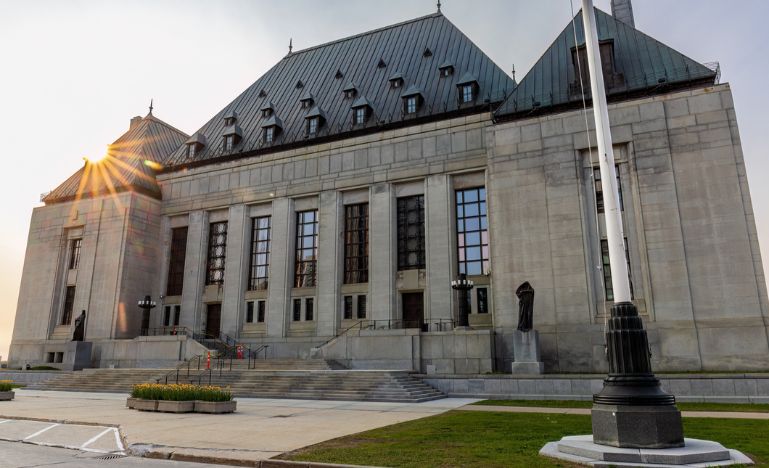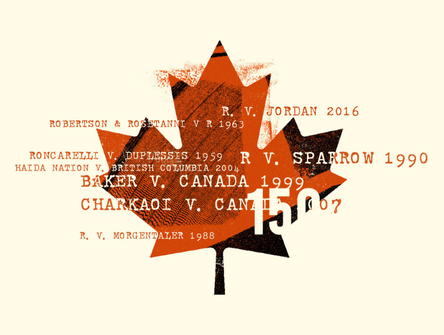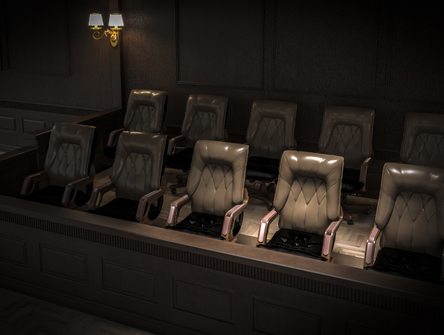Restoring the honour of the Crown after a breach of treaties
Supreme Court says governments of Ontario and Canada have made a "mockery" of obligations to the Anishinaabe of the upper Great Lakes

The Supreme Court of Canada has found that since 1875, the Ontario and federal governments have “dishonourably breached” the “sacred promises” made to the Anishinaabe of the upper Great Lakes and made a “mockery” of their treaty obligations to them.
In a unanimous decision, the Court gave the Canadian and Ontario Crowns six months to reach an agreement with the First Nations under the 1850 Robinson-Superior Treaty on past annuity payments. It also made clear that the Crown has a constitutional obligation to diligently implement the augmentation clauses of both the Robinson-Superior and Robinson-Huron Treaties going forward.
"For almost a century and a half, the Anishinaabe have been left with an empty shell of a treaty promise,” said Justice Mahmud Jamal, writing for the Court, noting that the annuities have been frozen “at a shocking $4 per person,” with the first and only increase made in 1875.
“Today, in what can only be described as a mockery of the Crown’s treaty promise to the Anishinaabe of the upper Great Lakes, the annuities are distributed to individual treaty beneficiaries by giving them $4 each.”
The issue of annuities payments first came to the Supreme Court shortly after it was first created. Jamal said since then, the Crown has shown a persistent pattern of indifference as it relates to its treaty obligations.
“In my view, the Crown must increase the annuity under the Robinson Treaties beyond the $4 per person retrospectively, from 1875 to the present,” he wrote, the emphasis his own.
“It would be patently dishonourable not to do so. […] The Crown’s ongoing breach of its augmentation promise, in the circumstances, is also a breach of the treaties themselves.”
The decision follows the decisions in two stages of a three-stage court challenge from First Nations under the two treaties. The Robinson-Huron plaintiffs had already reached a $10 billion settlement before the matter reached the Supreme Court, which remains unaffected by the decision. The Robin-Superior plaintiffs have not yet come to an agreement, and the Court has directed negotiations rather than a court imposition of damages. However, if there is no agreement in six months and the Crowns set an amount that the Superior plaintiffs are unhappy with, it will be reviewable by the Courts.
While the Court of Appeal’s decision in this matter came to a series of shifting majorities on different points of law raised by the challenge, the Supreme Court was unanimous in its determination that allows some of the appeals. Those matters included determining that the appropriate standard of review in this situation was a standard of correctness because it is a constitutional matter, that the claim was not statute-barred by Ontario’s limitations legislation, and that the Crown has a duty to diligently implement the augmentation clauses to uphold the honour of the Crown.
The Court also dismissed the cross-appeal by the two treaty plaintiffs, saying the Crown has no fiduciary duty, but that their obligation flows from the honour of the Crown. Both Canada and Ontario had previously conceded that they were in breach of the treaty’s augmentation clause.
Harley Schachter, legal counsel for White Sand and Red Rock First Nations, which are part of the Huron-Superior Treaty plaintiffs, described the decision as a victory for democracy and his clients.
“For 175 years, the governments, like a fox in charge of a chicken coop, claimed that they alone had unfettered discretion to decide on whether there was any wealth to be shared,” Schachter says, noting that when the First Nations asked the courts for help, the government argued the courts had no role to play.
“If I can mix metaphors, after 175 years of abject and dishonourable neglect on the part of the Crown, and refusing to honour their treaty obligations, the government’s chickens have now come home to roost.”
Jason Madden, a partner at Aird & Berlis LLP in Toronto, and co-lead of the firm’s Indigenous practice group, who represented the Indigenous Bar Association at the hearing but is not speaking on their behalf, says that it is a landmark decision on treaty interpretation and the importance of ensuring that treaties are respected. It also drives home that courts will give substantive remedies when those treaties are not honoured.
“Breaches of treaties require substantive remedies,” Madden says.
“The courts have a wide breadth and obligation to ensure restitution, redress and compensation when there are breaches of these treaties. In the past, when a breach was found, a corollary substantive remedy sometimes has not been provided. What the Court is very clear on is that these agreements go to the heart of Canada’s constitutional morality. Treaties are constitutional documents, so they need to be correct in their interpretation.”
This speaks to the decision regarding the standard of review being correctness. These treaties are constitutional in nature, and therefore their interpretation must respect the underlying factual findings made by the trial judge unless those findings are not supported by the evidence.
“This strikes an important balance between respecting the role of trial judges in deciding what the historical facts are and the role of appeal courts in making sure that the interpretation of treaty rights that flow from those facts is the correct interpretation,” Schachter says.
“We’re dealing with constitutional rights that affect all Canadians and we have to get that right.”
Madden points to the strong language around the “shocking” levels of the annuities and that they make a “mockery” of the treaties.
“The Court is telling Canada as well as Ontario in this case that enough is enough. These treaties need to be honoured, and if you don’t honour your responsibilities under these treaties, the courts will enforce them and provide substantive remedies.”
He considers the direction the Court offers in this case to be innovative, particularly with respect to its timelines, but says it was necessary because the Court recognized the history at play.
“For well over a century, the Crown has shown itself to be a patently unreliable and untrustworthy treaty partner in relation to the augmentation promise,” Jamal wrote. “It has lost the moral authority to simply say, ‘trust us.’”
Madden adds that with respect to the shifting majorities on each question answered by the Court of Appeal, the unanimity of the Supreme Court decision provides clarity on the different questions the Court of Appeal grappled with.
“What’s wonderful about having a unanimous decision with such clarity is that a lot of those different pathways came from a lack of clarity, even in relation to the standard of review,” Madden says.
“This will be very helpful in future cases as well, so we don’t get the same sort of approach of different pathways that the Ontario Court of Appeal went down on some these issues.”
More broadly, Schachter says the decision is a progression of the law that focuses on reconciliation and the honour of the Crown as touchstones of justice.
“It puts to bed the idea that the Crown gets to decide on treaty issues and has unfettered discretion in deciding some of these issues,” Schachter says.
“They don’t. They are a treaty partner. It is not a dictation; it is a negotiation. It is a partnership. The Supreme Court of Canada is clearly telling us that the parties need to work together nation-to-nation so that it’s going to enhance nationhood for the First Nations, and that’s a good thing for Canada. We shouldn’t be afraid of that.”


